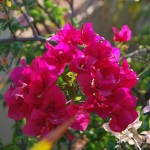 Raga? It’s one of the building blocks of Indian classical music, but it’s also one of the world’s hardest musical terms to define. In the simplest sense, “raga” means “color,” and consists of a collection of notes that musicians build a song around. Toronto-based lightsweetcrude’s debut album Listen to the Colour proves that “raga” doesn’t require a neat definition.
Raga? It’s one of the building blocks of Indian classical music, but it’s also one of the world’s hardest musical terms to define. In the simplest sense, “raga” means “color,” and consists of a collection of notes that musicians build a song around. Toronto-based lightsweetcrude’s debut album Listen to the Colour proves that “raga” doesn’t require a neat definition.
Lightsweetcrude plays with and creates new shades of traditional ragas on Listen to the Colour, which released in October 2011. Producer and keyboardist Jason Steidman envisioned the album, and brought together the ensemble’s team of talented artists. Before launching the project, Steidman studied Indian classical music for several years—even studying harmonium in order to learn the feel of the music.
“Ahir/Now”
Listen to the Colour draws on numerous other musical influences, including funk, jazz, and surf rock. On the track “Ahir/Now,” guitarist Fareed Haque weaves the fabric of the melody before the group launches fully into the song. Complete with handclaps and thumping piano and drums, “Ahir” evokes the spirit of Dick Dale’s famous “Misirlou.”
Now watch this clip of santour maestro Shivkumar Sharma perform raga Ahir Bhairav, with Zakir Hussain on tabla. “Ahir” is based on this very same raga, and listening to Sharma’s rendition it’s not hard to imagine the guitar layered over the santour.
“Raga Ahir Bhairav”
“A Call to You, Piloo”
On “A Call to You, Piloo,” Rez Abassi’s electric sitar bridges a combination of guitar, bass, drums, and organ with the more traditional classical instruments bansuri and tabla. It’s a mixture of jazz and funk, for sure, but it’s also built upon raga Piloo (Pilu), performed here with more “standard” classical form by sitarist Shahid Parvez Khan.
“Raga Piloo”
Whether you’re a fan of classical Indian music or just curious about it, you’ll enjoy exploring the many shades of “raga” with lightsweetcrude.

